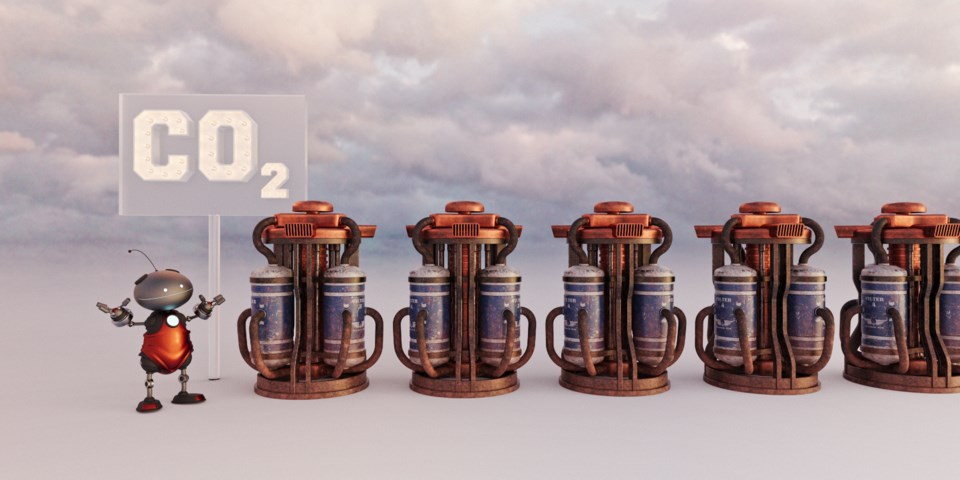One of the challenges with carbon capture and sequestration is that once you’ve captured the CO2, you need a place to put it – permanently.
Researchers with Ocean Networks Canada are floating an ambitious negative emissions plan, called Solid Carbon, that would use renewable energy, direct air carbon capture and traditional oil drilling technology to permanently store captured CO2 deep under the ocean floor in the Cascadia Basin about 300 kilometres off the coast of Â鶹´«Ã½Ó³»Island.
Open Ocean Networks, an initiative of the University of Victoria, is funded by the federal government and is responsible for monitoring the ocean off the coast of B.C.
A recent milestone in the Solid Carbon project was reached with the publication of a by University of Calgary scientists that demonstrates the porous basalt in the Cascadia Basin is ideal for CO2 sequestration, because any CO2 pumped into the basalt would be permanently sequestered.
“Through their modeling, they documented that, within a couple of decades, the CO2 would become rock and then there would be no need to monitor,” said Ocean Networks Canada president Kate Moran.
Starting in 2025 or 2026, Moran said the Solid Carbon project wants to start a demonstration project, with a trial injection of CO2.
The site 300 kilometres off the coast of Â鶹´«Ã½Ó³»Island was chosen, Moran said, because “it’s the best characterized basalt location on the planet.”
The ultimate goal of the project is building a floating direct air capture system that would be powered by wind and solar power to capture and sequester CO2 from the air. But she said the basin could also be used by industry that wants to do carbon capture but which has no access to geological sequestration.
“If we have our completion installed and we have demonstrated the injection, we would obviously be using the basin for sequestering whatever CO2 needs to be sequestered,” Moran said.
All of the technology needed for Solid Carbon’s negative emissions project are available. The one thing missing right now is a value proposition.
Direct air carbon capture is currently prohibitively expensive – costing anywhere from $232 to $600 per tonne. That’s why B.C.'s Carbon Engineering has been developing a use for captured CO2 – making carbon neutral jet fuel. Without an end use for captured CO2, capturing and sequestering is strictly an expense.
Moran said the project would probably need some significant government funding to get it off the ground. And to make it viable, the cost of direct air capture will have to come down and carbon taxes will have to keep going up.
“Our goal is to get the price down to the price of carbon that Canada has committed to by 2030, which $170 per tonne,” Moran said.
She added the 45Q incentive in the U.S. is intended to spur investments in CCS and it doesn’t matter where the CO2 is sequestered, so its possible a credit scheme could evolve that would help fund negative emissions projects like the Solid Carbon project.
Once an injection system was in place, Moran said the project could start with 500,000 tonnes of CO2 per year per, with the potential to scale up to 20 billion tonnes per year by 2100.



